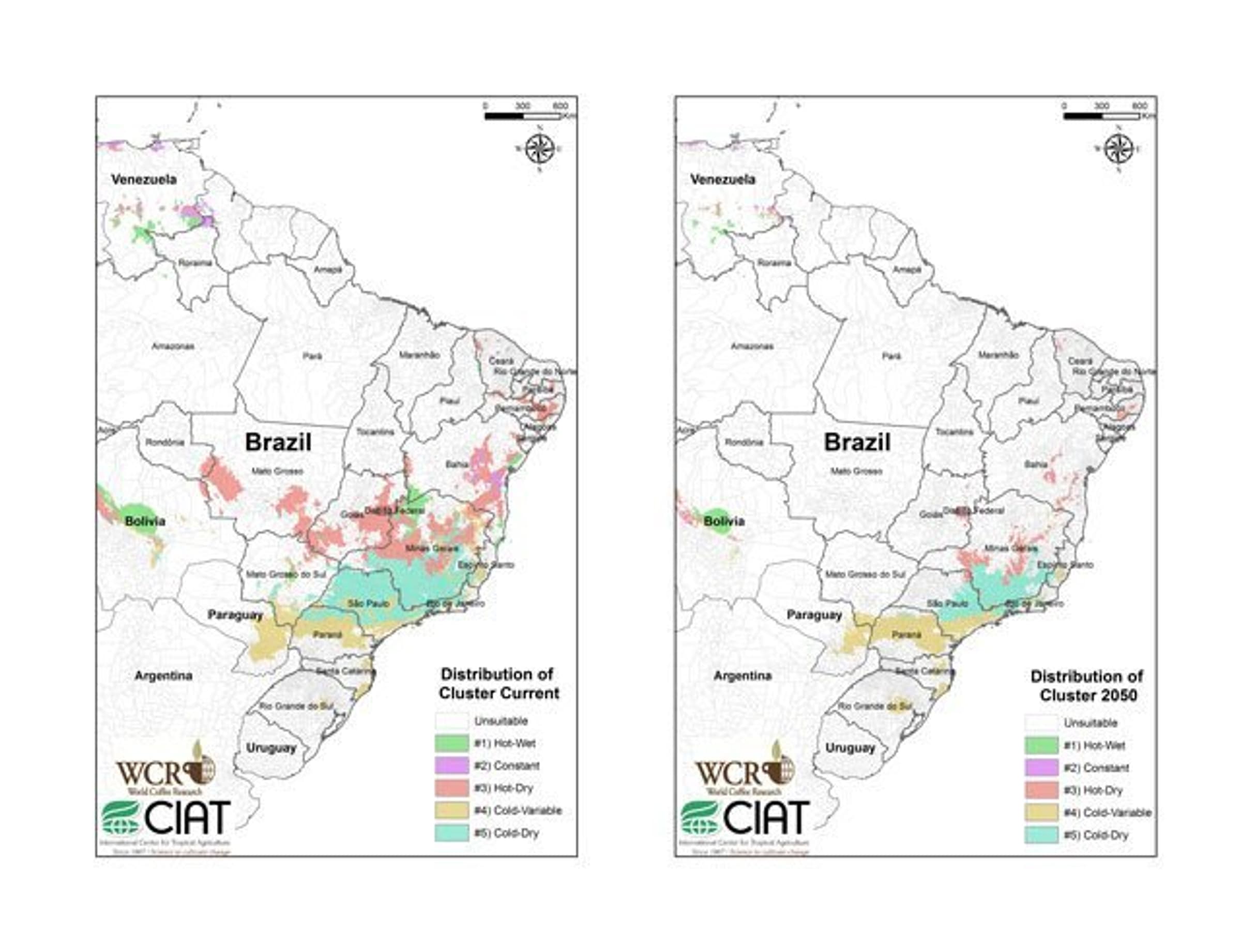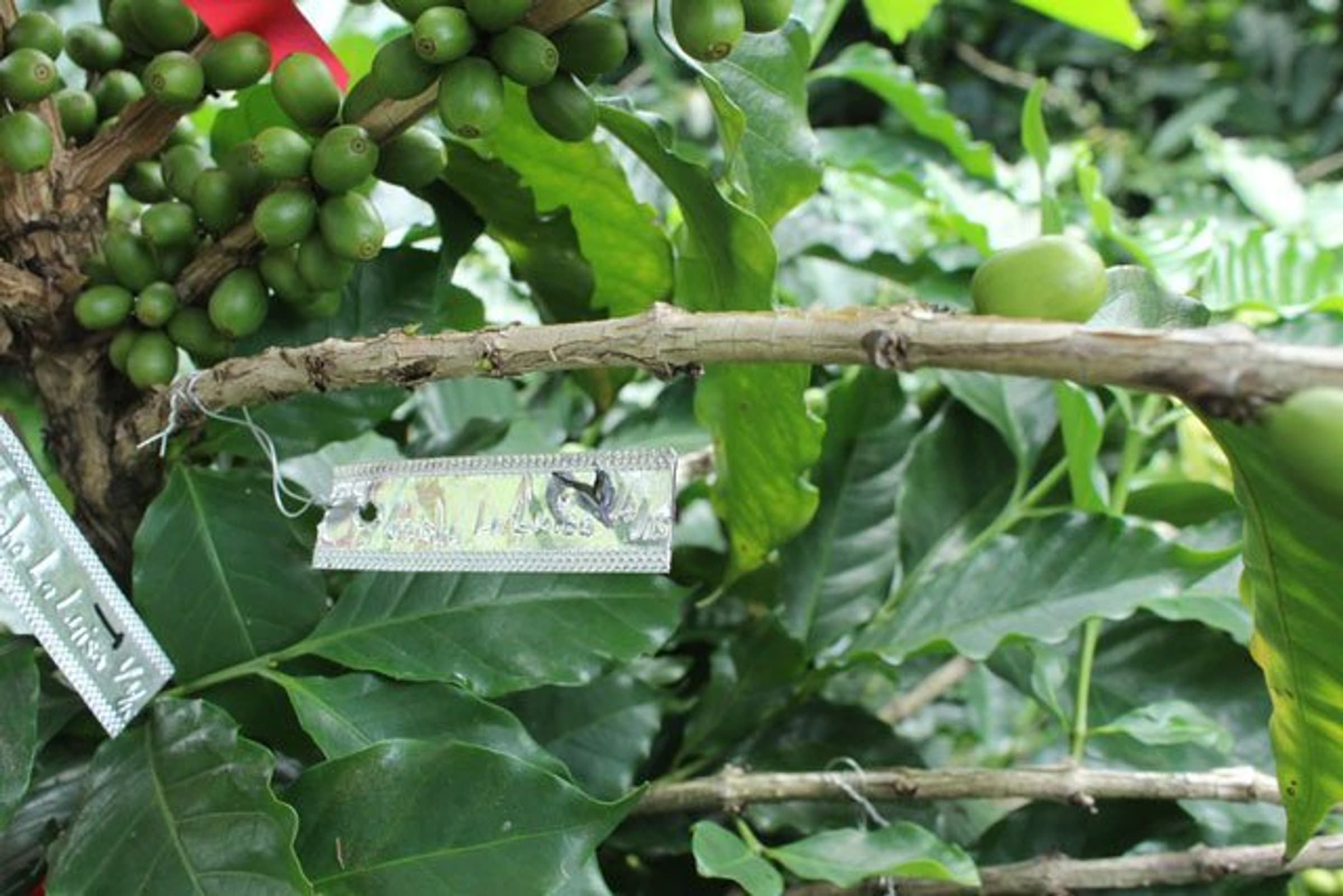Climate change: Pinpointing the world’s most vulnerable coffee zones
A new study from WCR, published in the journal PLOS ONE, identifies the key climate zones in which coffee can grow.
A new coffee study, published today in the journal PLOS ONE, confirms predictions that half of the land currently suitable for Arabica coffee production will no longer be suitable by 2050. But it also identifies the key climate zones in which coffee flourishes, and shows how these zones will change by 2050, which brings new insights about what can be done to adapt. The full study is available at PLOS ONE.
Not all coffee climates will be affected equally by climate change. The new research shows for the first time how each of five “agro-ecological zones” for coffee will respond to climate change by the middle of the century. The findings show the biggest losers will be producers in hotter areas with long dry seasons, such as parts of Brazil, India, and Central America. There, almost 80% of current coffee areas will become unsuitable.
Opportunities—and threats—for Arabica
Areas around the equator with cooler and seasonally constant temperatures, including many parts of Colombia, Ethiopia, Kenya and Indonesia, will be least affected by climate change—good news for the specialty coffee industry, which relies on these regions for its highest quality coffees. But even those areas are expected to suffer a one-third slump in suitability by 2050.
The highest losses will be in hot, dry regions such as northern Minas Gerais state in Brazil, parts of India, and Nicaragua—areas that currently give some of the highest yields of Arabica coffee. Nearly 80% of the land in this climate zone will become unsuitable for coffee by 2050. Cool but dry climates, such as those in western São Paulo state in Brazil, will also see substantial losses. Meanwhile, substantial areas that currently have cooler or wetter climates will become hot and dry by 2050. It is clear from these findings that Arabica coffee plants will have to become better adapted to heat and drought stress, and coffee growers will need to tailor their practices toward hot and dry conditions.

Areas with relatively constant temperatures, such as much of the coffee land in Kenya (represented in purple), are predicted to remain more effective for coffee growing in the coming decades.

The study predicts that nearly all of the coffee area in Brazil's hot-dry areas (shown in pink) will become unsuitable for coffee production by 2050.
“Overall, the Arabica market is extremely threatened. There is rising demand. In the future, we’d need more area to grow coffee on, but we’re going to have less. I believe high locations in East Africa and Colombia, Ecuador and possibly Indonesia might become more suitable. But they will have to be very productive to meet the demand because Brazil, the current powerhouse, is going to see big losses.” — Christian Bunn, lead author, International Center for Tropical Agriculture (CIAT)
The study also provides more detail on how climate change will impact the elevations at which coffee can grow well. By 2050, the median elevation of land suitable for Arabica coffee will be more than 300m higher, but in hot, wet zones as in Southern Mexico, coffee will need to migrate nearly 500m higher.
Adapting to climate change
Coffee is currently grown in many different climate zones in the equatorial belt—from hot and dry, to cooler and wetter—but previous studies of coffee and climate change only distinguished between areas that are or will be “suitable” or “unsuitable” for coffee growing. This limited their practical usefulness for adapting coffee to climate change. This study unlocks the black box of “suitability” and shows how the different climate zones are expected to fare over the next 35 years. This is the first time that researchers have mapped coffee’s current and future climate zones globally.
An estimated 25 million farmers produce coffee on over 11 million ha, most of whom are smallholders who depend on coffee for their livelihoods. Coffee growers will need to adapt their agronomic practices to remain competitive as the climates in their areas shift from one type to another. Adaptation will be difficult for smallholders as coffee “climbs up the mountain” or climates shift to become hotter and drier.
By mapping current and future climate zones, the study’s findings will allow for more skillful and targeted climate adaptation planning. “This research gives, for the first time, spatially-explicit insights about what type of adaptation is needed. Hot-dry climates will need to adapt differently than hot-wet ones. Previous work only indicated if coffee would become more or less suitable. This information will help to guide the adaption process,” says Dr. Peter Läderach, co-author of the report and senior climate change specialist for CIAT.
“Climate change for coffee is extremely serious,” says Bunn. “It’s a perennial crop, which means what you plant today will be in the ground still in 2050—it will get the full impact of climate change.” Focusing on adapting the coffee plant itself is one of the strategies that researchers are using to plan for a future in which coffee is threatened.

Coffee breeders at World Coffee Research are working to develop varieties that will be resilient in the face of climate change.
Buying more time
“We can use the genetics of coffee to buy more time,” says Tim Schilling, co-author of the report and executive director of World Coffee Research a non-profit research and development program that studies coffee. “The information in this report will be invaluable as we work to create new, climate-resilient varieties tailored to individual climatic zones.”
World Coffee Research commissioned the study and is using the findings to locate sites for the International Multi-location Variety Trial, a comparative study of how 35 coffee varieties perform across the world in different climate zones. The data will be used to guide World Coffee Research’s global coffee breeding program, which is working to adapt the coffee plant so that it produces high quality coffee with good yields under a climate-constrained environment.
The study was undertaken as part of the CGIAR Research Program on Climate Change, Agriculture and Food Security (CCAFS), conducted by climate scientists with the International Center for Tropical Agriculture (CIAT).
Key findings summary
- Confirms predictions of 50% reduction in land area suitable for Arabica coffee production by 2050
- Dramatically expands our understanding of what it means for land to be “suitable” for coffee production now and in the future
- Gives a detailed picture of which types of coffee climate will be most affected by 2050, with significant losses predicted for Brazil, the world’s largest coffee producer.
World Coffee Research is a 501 (c)(5) nonprofit collaborative research and development program of the global coffee industry to grow, protect, and enhance supplies of quality coffee while improving the livelihoods of the families who produce it. The program is funded and driven by the global coffee industry, guided by producers, and executed by coffee scientists around the world. It is based at the Norman Borlaug Institute at Texas A&M University. worldcoffeeresearch.org
The International Center for Tropical Agriculture (CIAT) – a member of the CGIAR Consortium – develops technologies, tools, and new knowledge that better enable farmers, especially smallholders, to make agriculture eco-efficient – that is, competitive and profitable as well as sustainable and resilient. Eco-efficient agriculture reduces hunger and poverty, improves human nutrition, and offers solutions to environmental degradation and climate change in the tropics. With headquarters near Cali, Colombia, CIAT conducts research for development in tropical regions of Latin America, Africa, and Asia. www.ciat.cgiar.org
The CGIAR Research Program on Climate Change, Agriculture and Food Security (CCAFS), led by the International Center for Tropical Agriculture (CIAT), brings together the world’s best researchers in agricultural science, development research, climate science and Earth System science, to identify and address the most important interactions, synergies and tradeoffs between climate change, agriculture and food security. www.ccafs.cgiar.org.